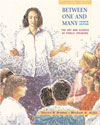To effectively organize your speech you should first: - Focus on your audience when organizing your speech.
- Refine the specific purpose.
- Create a clear thesis statement.
Organize the body of the speech before tackling the introduction or conclusion. Remember that: - Two to five focused main points should fully develop the thesis statement.
- Use parallel structure, simplicity, and balance.
- Develop main points by using subpoints, supporting points, and further
support.
Organize the speech body in one of several patterns: - time
- extended narrative
- spatial
- categorical
- problem-solution
- stock issues
- refutational
- causal
- motivated sequence
- wave
- spiral
- star
- call and response
Use signposts as transitional statements to help your audience follow the organization of your speech. The introduction to a speech should: - open with impact
- focus on the thesis statement
- connect with the audience
- preview the body of your speech
Effective openings may include: - a brief story
- a quotation
- a startling statement
- reference to the audience
- the occasion, or a current event
- appropriate humor
- a personal experience
- a thought-provoking question
The conclusion to a speech should: - summarize the main points of the speech
- close with impact
Ways to close include: - quotation
- brief anecdote
- direct appeal to action
- return to the opening theme
A formal outline is sometimes required of beginning speakers. Many instructors prefer students to use standard outline notation and write a complete-sentence outline. Speaker's notes, usually placed on small cards, can be used
when presenting the speech, as can overhead transparencies or PowerPoint slides. | 


 2003 McGraw-Hill Higher Education
2003 McGraw-Hill Higher Education